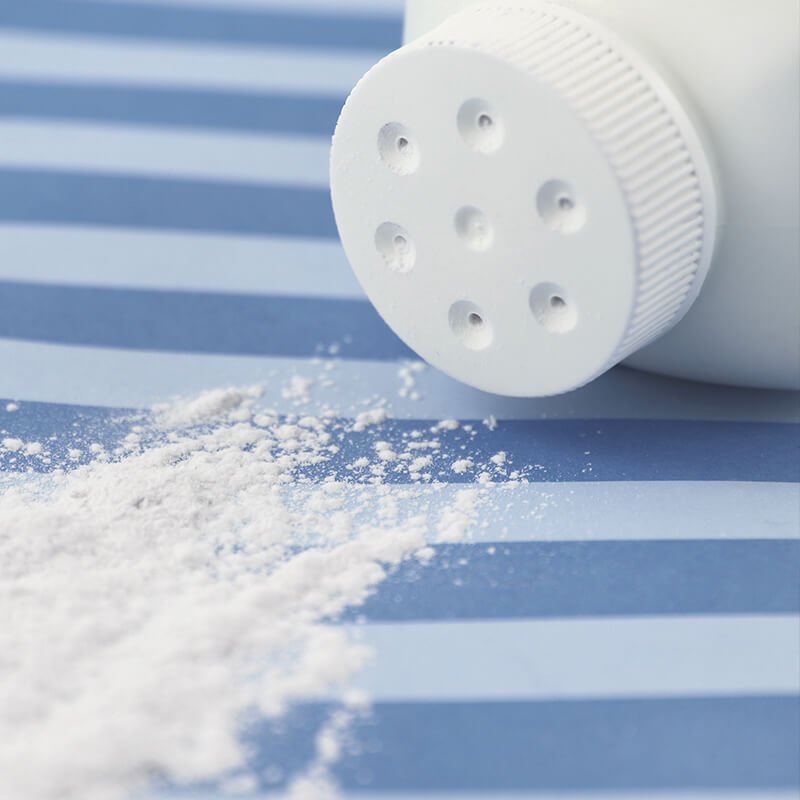When we buy a product and use it as it was intended, we expect it to be safe. Unfortunately, product manufacturers, distributors, retailers and others in the supply chain often produce or distribute dangerous products that seriously injure consumers.
Injured victims may have grounds for legal action against the manufacturer or other parties responsible for the product. Sometimes a case can be built around a failure to warn people about the risks of using a product. However, building an effective case over a defective product injury can be complicated and difficult to do without the help of a licensed attorney.
If you have suffered a product injury, the South Bend defective product attorneys are ready to work with you to determine your legal options. We are dedicated to holding negligent companies accountable and pursuing compensation for victims’ damages.
Our attorneys have recovered millions for personal injury victims. Founding partner Daniel Pfeifer has been representing personal injury victims for more than 30 years. He is also a member of the Million Dollar Advocates Forum, which includes less than one percent of U.S. trial lawyers.
At Pfeifer, Morgan & Stesiak, we offer free, no-obligation initial consultations. If we take your case, there are no charges or fees unless you collect compensation. There is no risk in contacting us to see how we may be able to help.
Pfeifer, Morgan & Stesiak. Legal help when you need it. Call (574) 444-0741
Am I Eligible to File a Case?
There are many factors your attorney must consider before he or she will be able to answer this question. If you were injured while using a product, you should strongly consider calling our firm to schedule a free consultation. There is no obligation to hire our firm if we find you have a case, so there is no risk.
Indiana’s product liability act defines a dangerous product as one that fits two criteria:
- It has a defect that a reasonable person would not be expected to foresee
- It presents an unreasonable danger to people who are assumed to be using the product in a way that is expected by the seller
There are generally three causes of action over a defective product injury:
- Design defects – A poorly designed product could be dangerous, leading to an entire line of products being inherently dangerous.
- Manufacturing defects – These defects occur when the product or device is being assembled. For example, there may have been a human or machine error during assembly that made the product dangerous.
- Failure to warn – If a company fails to warn consumers about a product’s injury risks or potential side effects, a court may hold the company liable for injuries suffered by consumers.
If you think you may have a case, or are unsure, give us a call today to schedule a free consultation.
Proving a Defective Product Case
Indiana state law says a party that sells or leases a product in a defective condition, making it unreasonably dangerous for use, may be held liable for damages. There are several criteria that your claim must first satisfy, otherwise the seller of the product will not be held liable:
- You are part of a class of people who the sealer would reasonably assume would suffer harm from the product in question
- The at-fault party sold the product
- The product was received by you without a substantial alteration in its condition
- The seller failed to use reasonable care in preparing and/or manufacturing the product
- You bought the product or signed a contract with the seller
Your South Bend defective product lawyer may be able to file a lawsuit under the legal theory of strict liability. In this type of claim, you are not required to prove the manufacturer was negligent. However, Indiana law says you are only allowed to file a strict liability claim against the seller if the seller also manufactures the product or the part that was dangerous.
You can be sure the at-fault party will try to counter your claims about its liability. For example, they may claim you knew the product was dangerous or defective and you still chose to use it. Indiana law says these defenses may shield the seller from liability.
Fortunately, if you hire an experienced attorney, he or she will know how to counter these defenses.
Schedule a free consultation today. No upfront fees. (574) 444-0741
How an Attorney May be Able to Help You
Many injury victims do not realize what they are up against when they considering taking legal action, particularly in a defective product claim. Many of the products we use are designed or manufactured by large corporations with deep pockets. They are prepared to fight to avoid liability for injuries caused by their products.
That is why you need licensed legal representation to help level the playing field. Our attorneys want to give those who were injured because of another’s negligence the opportunity to take legal action, no matter their financial situation. That is why there are no upfront fees for our services here at Pfeifer, Morgan & Stesiak.
Our attorneys have the resources and experience to take on product manufacturers and aggressively pursue maximum compensation. We can manage the investigation of your case, consult experts, research the design and production of the product, and prepare your case for trial if necessary.
It is important to note, those who hire attorneys often receive more compensation compared to those who do not.
Will I Have to Go to Court?
Injury victims who are considering legal representation are often unsure about hiring a lawyer because they think they may need to go to court. There is no one-size-fits-all answer to this question, as the need to go to court depends on several factors of your case.
The first thing to consider is whether you have an attorney on your side who is both willing and able to take a product liability case to court. Some attorneys may opt for negotiating a settlement while others are willing to file a lawsuit and fight the liable party in the courtroom. At Pfeifer, Morgan & Stesiak our attorneys are prepared to act in our clients’ best interests. That means we are prepared to negotiate or take the case to court to secure justice and fair compensation.
If the liable party is refusing to offer a fair settlement for your case, it may be necessary to file a lawsuit. However, there are times when a liable party would prefer to avoid the added expenses of fighting a lawsuit. They may decide to settle after a lawsuit is filed. They do not want to take the risk of losing in court and having to pay out more than they would in a settlement.
Whether you file a lawsuit or settle your case, it is important to have an attorney who is prepared to fight for your rights. Our attorneys have decades of experience both negotiating and litigating injury cases and are ready to take the necessary steps to help you recover maximum compensation.
Who Could be Held Liable for My Injury?
While the company that made the product is often the one held liable for injuries, liability for a defective product injury is determined on a case-by-case basis.
One of the main considerations will be how the product became defective. If the defect was in the design of the product, the designer may be held liable. If the product became defective when it was being built, the manufacturer may hold liability.
Others in the supply chain for the product that may be held liable, include:
- Retailers
- Wholesalers
- Suppliers
- Company that produces a component of the product
- Company that assembled the product
One of the reasons you should strongly consider hiring an attorney is that he or she can review your situation to determine who may be liable. The South Bend defective product lawyers at our firm have extensive legal knowledge of how to assess liability for a personal injury.
Compensation for a Defective Product Injury
Like any other personal injury, a defective product injury can affect you physically, financially and emotionally. At our firm, we carefully review your medical records and other evidence to determine the full extent of your damages.
While each case is unique, victims generally pursue the following forms of compensation for a defective product injury:
- Past and future medical bills related to treating your injuries
- Physical therapy
- Lost wages for the days you missed work during your recovery
- Loss of earning capacity if you are permanently disabled and cannot work at the same level as before
- Damage to property
- Physical pain
- Emotional/psychological suffering
- Lost enjoyment of life
- Loss of companionship
You often see media reports about punitive damages in defective product cases, such as cases involving defective drugs, medical devices or personal hygiene products. These damages are reserved for cases where there is clear and convincing evidence the at-fault party behaved with malice, fraud or gross negligence. In other words, there was intent to cause harm or extreme negligence that put people at risk, and the at-fault party should have known people could be injured.
Our firm is prepared to review your claim to determine if punitive damages may be available – our goal is to obtain maximum compensation for your claim.
It is important to note the state places a cap on punitive damages – three times compensatory damages or $50,000, whichever amount is greater. State law also says you can only recover 25 percent of a punitive damages award. The remaining balance is paid to the Violent Crime Victims Compensation Fund.
Have Questions About Your Claim’s Value? Call (574) 444-0741
How Much Time do I Have to File a Claim?
As with other personal injury claims, you have two years from the date of injury to file a claim, or you risk having the claim dismissed in court. That said, you must file a claim within 10 years of the date the product was purchased – if the injury occurs after eight years you still have two years to file even though you would pass the 10-year mark.
If you are unsure of the deadline for your claim, our South Bend defective product lawyers are ready to discuss your situation in a free consultation.
Common Types of Defective Products
We expect companies to produce products that are safe for public use, but that does not always happen. Although product recalls may help consumers stay safe, for some victims, a recall comes much too late.
There are a wide variety of products that may be unsafe and get recalled, such as:
- Children’s toys
- Personal hygiene products
- Baby and toddler car seats
- Vehicle airbags
- Home appliances
- Car parts, such as brakes, seat belts and emission systems
- Household cleaning products
- Medical devices (hip replacements, knee replacements, surgical mesh, etc.)
- Prescription drugs that cause dangerous side effects, like cancer
- Talcum powder
- 3M combat earplugs
Contact our South Bend Defective Product Attorneys Today
With a track record for success, Pfeifer, Morgan & Stesiak knows what it takes to build strong cases and pursue maximum compensation.
If you are paying for injuries because of someone else’s negligence, you should not be left to shoulder that burden alone. Our firm believes at-fault parties should be held accountable for their actions, whether the party is a driver or a large corporation. We are prepared to walk you through the claims process step by step. We want you to be focused on your recovery while we manage the legal process on your behalf.
To learn more about our firm and how we can help you, contact us for a free legal consultation. There are no upfront fees for our services – we do not get paid for providing legal representation unless you receive compensation.
Our office is located at 53600 North Ironwood Drive in South Bend, just 11 minutes from the U.S. District Court for the Northern District of Indiana.
Have some questions? Call (574) 444-0741.













